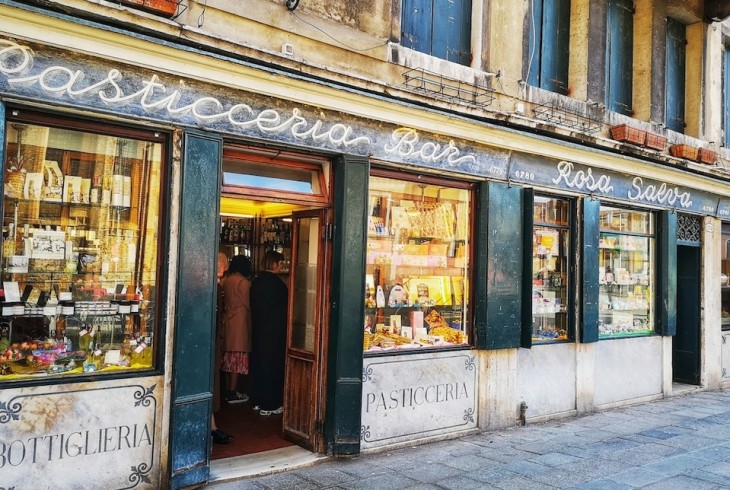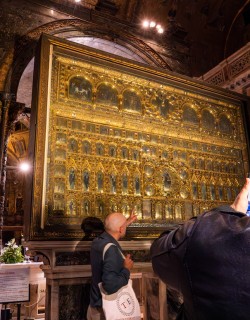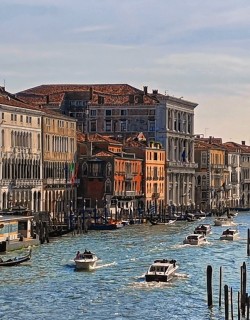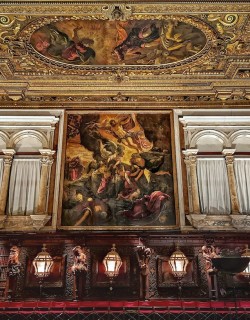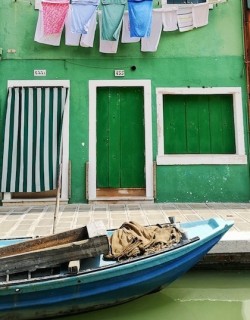It’s February, and communities all across the Christian world are gearing up for Carnival celebrations. With the penitential period of Lent fast approaching, the weeks leading up to the 40 days of sober religious observance have for centuries been taken as the perfect opportunity to engage in some revelry. Nowhere does it better than Venice, whose world-famous carnival has been synonymous with bacchanalian partying and masqued intrigue for as long as anyone can remember.
But there’s a lot more to carnival time than swanky costumes and elaborate floats; one of the main justifications for carnival celebrations was the necessity of using up foodstuffs that would become off-limits during the feasting and penance of Lent; indeed, the word carnival derives from the Latin phrase carne levare, to put away meat. Sugar and fat were also high on the list of forbidden culinary staples, so there are plenty of traditional Italian sweets whose recipes we owe to Carnival. This week on our blog we’re profiling five of our favourite Carnival specialties. Many of these are only made during this time of the year, so make sure to sample them if you’re coming to Venice to experience the Carnival for yourself!
1. Fritelle
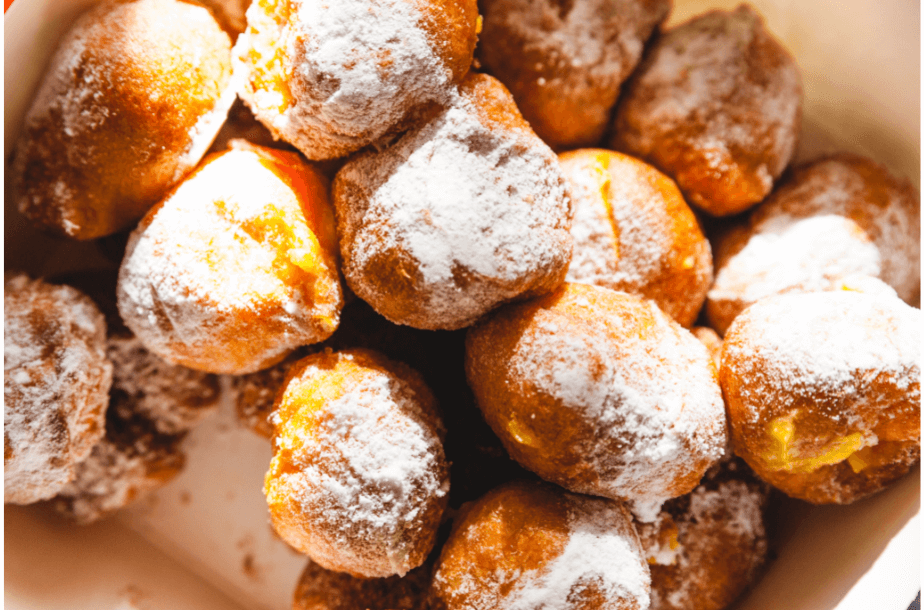
Ask most Venetians what the highlight of Carnival season is, and they’re as likely to point towards these iconic local sweet-treats as they are to masked balls or elaborate costumes. These chewy dough balls have a long and noble history in the Serenissima, with the first documented recipe dating back all the way to the year 1300. The recipe hasn’t changed much since: a rich dough studded with raisins, candied fruit and pine nuts, formed into balls and deep-fried to perfection. So popular and important were frittelle to Venetians that they could only be produced by licensed artisans known as fritoleri, who had their own guild and dispensed their delectable products to passersby on skewers. These days you’ll often find frittelle filled with chantilly creme or zabaione, a heady concoction made from eggs, sugar and alcohol - although many Venetians still consider the simpler, historical recipe to be the best.
Frittelle are made only during Carnival, so do as the Venetians do and make sure to eat your fill by the time Shrove Tuesday rolls around! Try them at their best at historic pastry shop Pasticceria Bar Rosa Salva, located on the picturesque Campo SS Giovanni e Paolo.
2. Cenci / Chiacchiere / Frappe
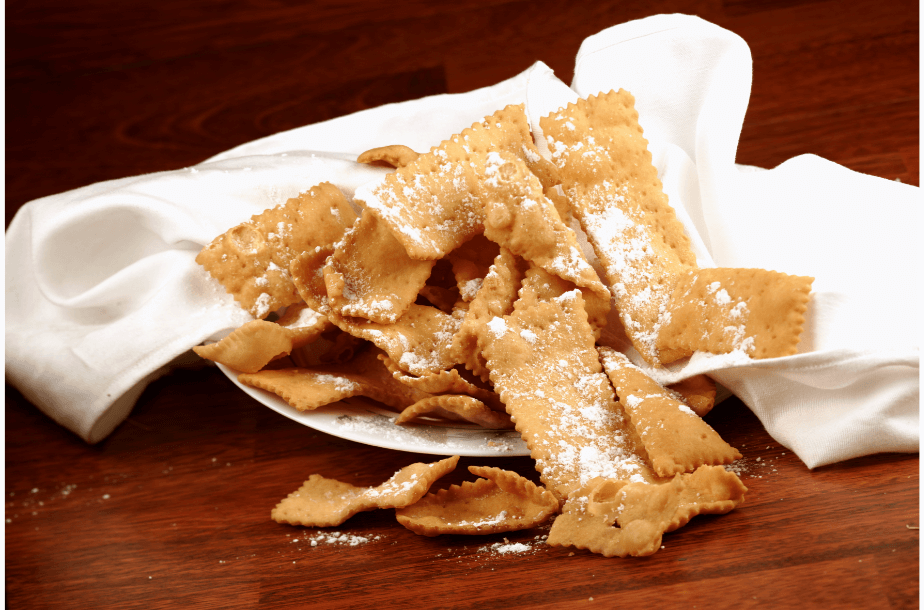
You’ll find these delicious corrugated strips of crispy deep-fried dough in pastry shops all across Italy during the Carnival period. The recipe is simplicity itself, with a simple dough made with butter, flour and eggs enriched with a drop of wine or grappa rolled out very thinly, cut into strips and deep fried.
Depending on where you are in the country, they’ll be offered up under a variety of different names: in Tuscany they are called cenci, a dialect word meaning rags, whilst in Rome you’ll be more likely to ask for frappe. In many parts of southern Italy they’re known instead as chiacchiere, meaning chat or gossip, whilst in Piedmont they’re instead called bugie - lies. In Venice you’ll probably see them described as galani. Whatever you call them though, they’re an unmissable carnival staple!
3. Castagnole
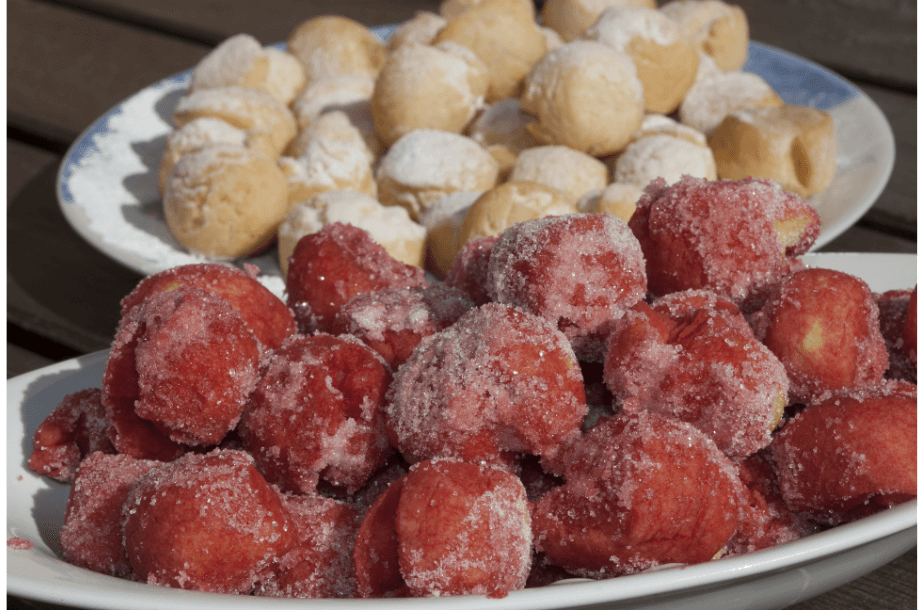
Castagnole means ‘little chestnuts’ in Italian, but there’s nothing nutty about this popular carnival treat. The name derives instead from the resemblance of these little golden-brown fried doughnuts to chestnuts. A recipe for castagnole is recorded in a manuscript from the 1700s, and they are often made at home during the period of carnival.
The dough used for castagnole is typically flavoured with lemon zest and aniseed liquor, and the finished article is often filled with chocolate or pastry cream before being rolled in sugar. Best enjoyed piping hot! In Venice you’ll often find castagnole under the name favette.
4. Ravioli di Carnevale
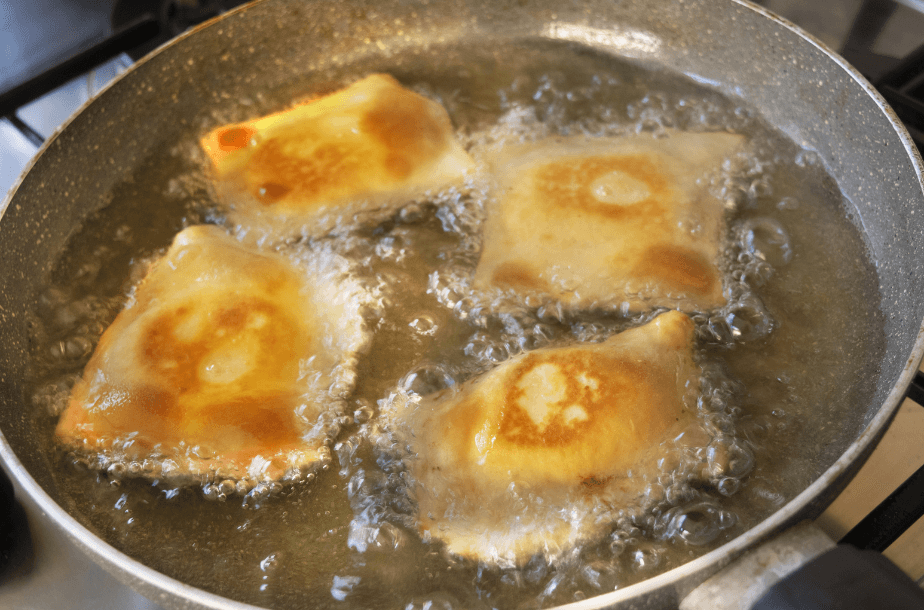
When you think of ravioli, the first thing that comes to mind are probably the savoury pillows of stuffed pasta that you’ll find on menus all across Italy. At Carnival time however, this sweet alternative takes centre stage.
Just like normal ravioli, these are made by crimping two squares of pasta dough together. But although they are the same shape as their more famous savoury cousins, ravioli di carnevale are deep fried instead of boiled, making them crispy little morsels of sweet goodness perfect for snacking on as you wander the streets of Venice. Oh, and the filling? Typically you’ll find some kind of jam lying in wait, but versions also exist that are stuffed with ricotta and chocolate. Mouthwatering!
5. Mammalucchi
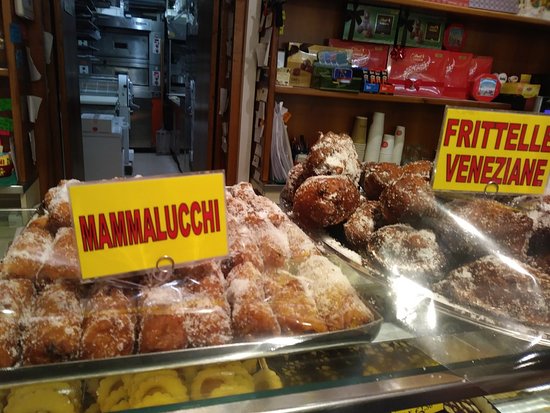
A more recent addition to the sweet scene of Carnival, like many of history’s greatest culinary creations mammalucchi owe their existence to a happy accident.
The story goes that the Venetian pastry chef Sergio Lotto made an error whilst mixing up the dough for a North African cake in the 1980s. "Che mammalucco!" he exclaimed as he realised his error - mammalucco (or mameluke in English) refers to a fearsome band of medieval Turkish militia, but for reasons unknown in Venetian dialect means something akin to ‘dunderhead.’ Unperturbed, and unwilling to waste the raw ingredients, Lotto experimented with the now useless dough, mixing in custard and orange peel before cutting the dough into cannoli-shaped cylinders and frying them. Predictably enough, Lotto’s mend-and-make-do creation was a success, and mammalucchi have been a carnival favourite ever since. Try them at Bar Pasticceria Targa, where Lotto himself headed the pastry kitchen for many years.
Through Eternity Tours offer a wide range of expert-led Venice small group tours and private itineraries, from tours of Saint Mark’s basilica and the Doge’s Palace to off-the-beaten track sites, food tours and visits to the islands of the Venetian lagoon. Check out our Venice tours page for more, and get planning your perfect trip to the Floating City!
